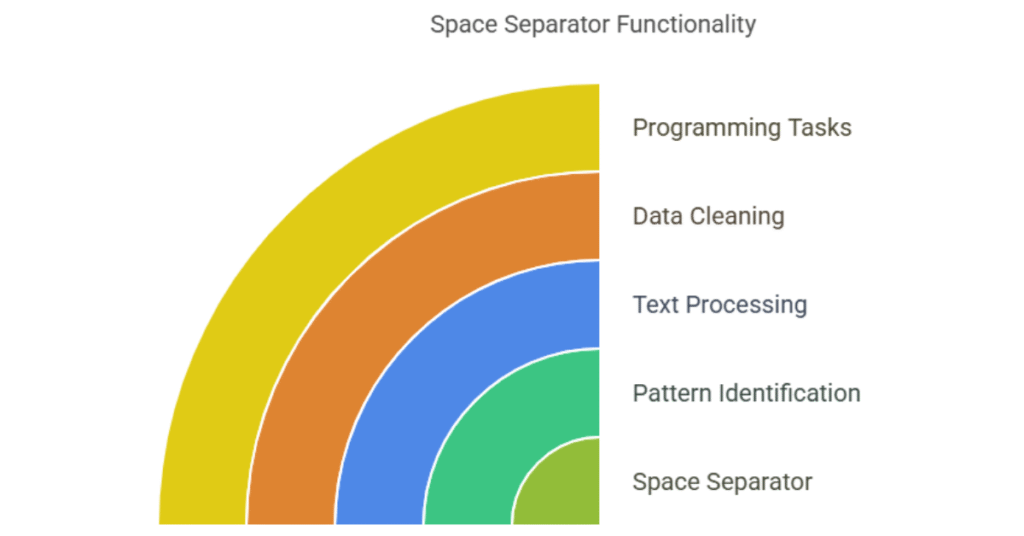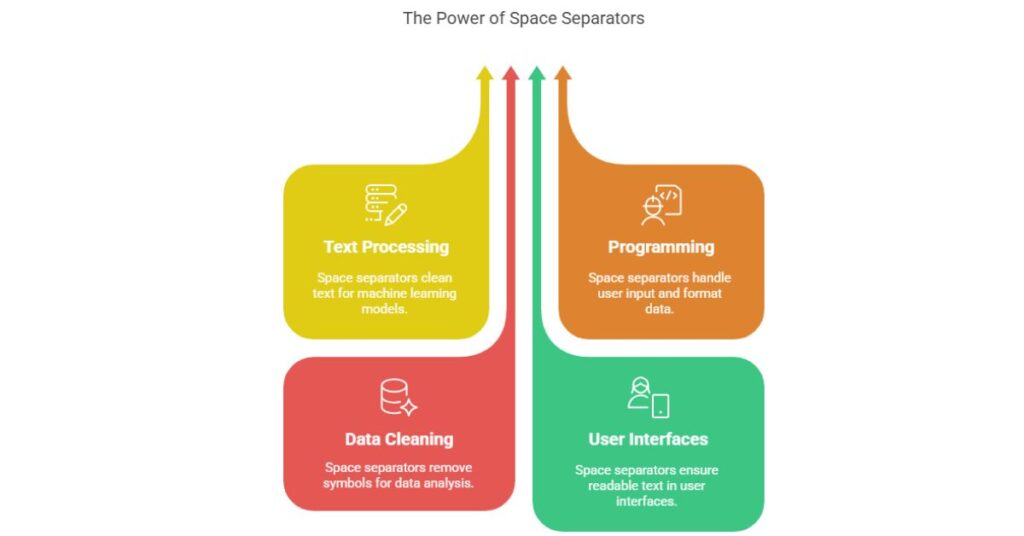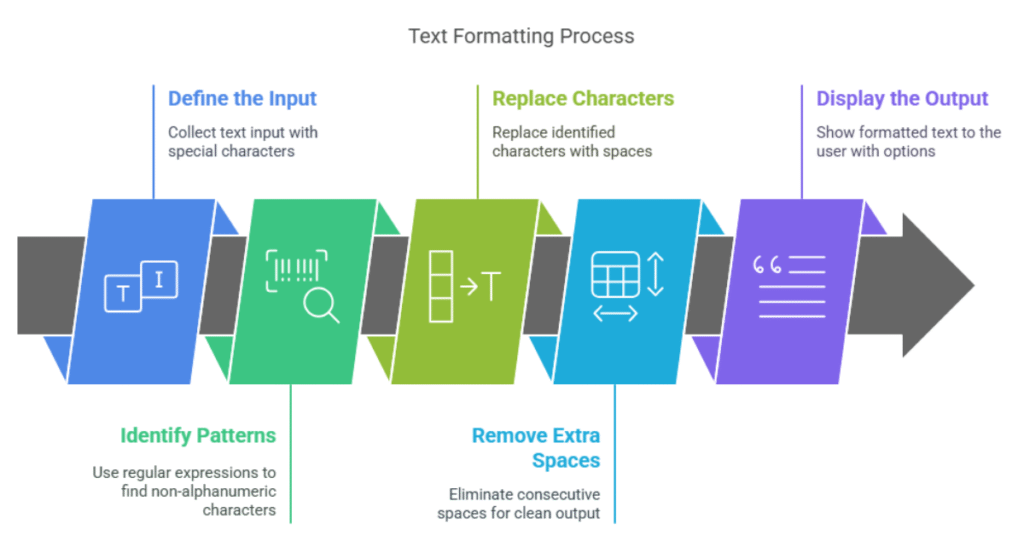Space Separator Tool
Example Input: “Hello,World!How are you?”
Table of Contents
Introduction to Space Separator

A space separator is a tool that adds spaces between words or characters in a given text. This tool processes input text by identifying patterns, such as special characters or punctuation, and replaces them with spaces. Space separators are widely used in text processing, data cleaning, and programming tasks.Understanding this concept is essential for tasks involving data formatting, input sanitization, and text manipulation.
How Space Separator Works
The space separator follows a simple process:
- It scans the input text for special characters or punctuation.
- It replaces non-alphanumeric characters with spaces.
- It removes extra spaces to ensure clean and readable output.
For example, the input Hello,World!How are you? is transformed into Hello World How are you. This process ensures that the output text is easy to read and compatible with various applications.
Applications

1. Text Processing
Space separators are often used in text processing tasks to clean and organize data. For example, they help in preparing text for machine learning models, which require formatted data for accurate predictions.
2. Programming
In programming, space separators help developers handle user input. They are used in parsing strings, formatting JSON data, and improving the readability of logs.
3. Data Cleaning
Many datasets include unstructured text with special characters.This tool remove unnecessary symbols and make the data suitable for analysis.
4. User Interfaces
Space separators are used in text editors or online tools where users need clean and readable text outputs. For example, when pasting text from a web page, unwanted characters are automatically replaced with spaces.
Benefits of Using
1. Improves Readability
A space separator ensures that text is easy to read by removing clutter caused by special characters.
2. Enhances Data Compatibility
Formatted text works better with tools and software that do not support special characters.
3. Saves Time
Automating the task of removing unwanted characters saves time and effort for developers and data analysts.
4. Optimized Data Storage
Clean and formatted text reduces unnecessary storage usage and improves processing efficiency.
Step-by-Step Guide

1. Define the Input
Start by collecting the text input. Ensure that the input includes special characters to demonstrate the functionality of the space separator.
2. Identify Patterns
Use regular expressions to identify non-alphanumeric characters in the text. Regular expressions allow you to efficiently scan and replace unwanted characters.
3. Replace Characters
Replace the identified characters with spaces. For example, replace commas, dots, or symbols with a single space.
4. Remove Extra Spaces
Remove consecutive spaces from the text to ensure the output is clean and readable. This step ensures proper spacing between words.
5. Display the Output
Show the formatted text to the user. Provide options to copy, save, or paste the output text for convenience.
Example: Space Separator Code in JavaScript
Here is a simple implementation :
javascript
function spaceSeparator(input) {
// Replace non-alphanumeric characters with spaces
const result = input.replace(/[^a-zA-Z0-9]+/g, ' ').trim();
return result;
}
// Example usage
const inputText = "Hello,World!How are you?";
const outputText = spaceSeparator(inputText);
console.log(outputText); // Output: "Hello World How are you"
This code snippet demonstrates how to clean and format text using JavaScript. It uses regular expressions to identify unwanted characters and replace them with spaces.
Best Practices
1. Test with Different Inputs
Test the space separator with various inputs to ensure it handles edge cases, such as empty strings or text with multiple special characters.
2. Use Efficient Algorithms
When processing large amounts of text, use efficient algorithms to ensure the tool performs well.
3. Provide User-Friendly Interfaces
If implementing a space separator in an application, ensure the interface is simple and easy to use. Include options for copying, pasting, and saving the output.
4. Handle Unicode Characters
When working with international text, ensure the tool can handle Unicode characters and special symbols.
Try another tools:Convert Tabs to Spaces
Challenges in Using Space Separators
1. Handling Edge Cases
Some inputs, such as text with emojis or symbols, may require additional processing to handle properly.
2. Performance with Large Text
Processing large files or datasets with millions of characters can impact performance. Optimize the space separator code for better efficiency.
3. Maintaining Context
In some cases, replacing characters with spaces may alter the meaning of the text. For example, dates or file paths may require special handling to preserve their structure.
Conclusion
A space separator is an essential tool for text processing, programming, and data cleaning. It ensures text is clean, readable, and compatible with various applications. As a CSE engineer, implementing and using a space separator is a fundamental skill that simplifies text manipulation tasks. By following best practices and addressing challenges, you can optimize the tool for better performance and usability. Whether you are cleaning datasets, handling user inputs, or preparing text for analysis, a space separator is a practical solution that saves time and improves accuracy.